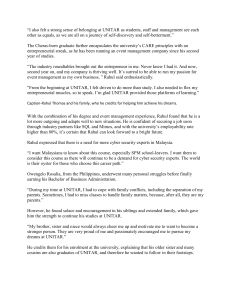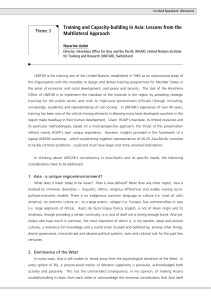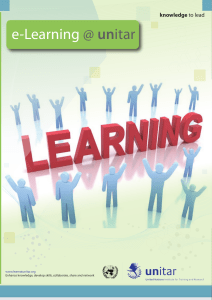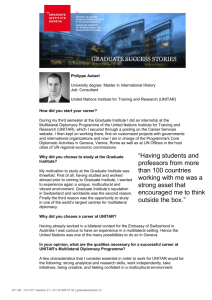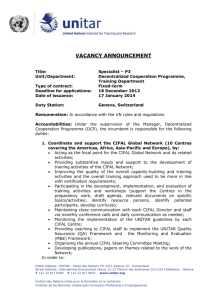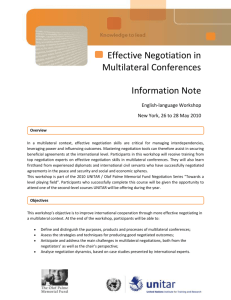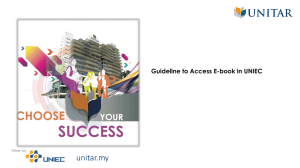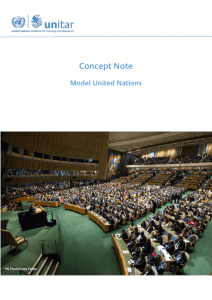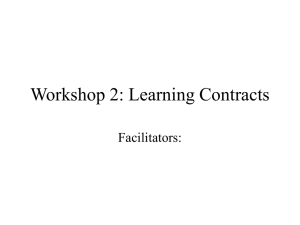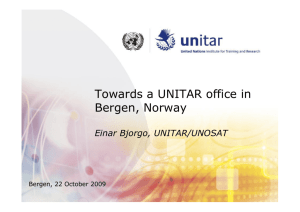Challenges and Constraints in Monitoring and Evaluation of
advertisement
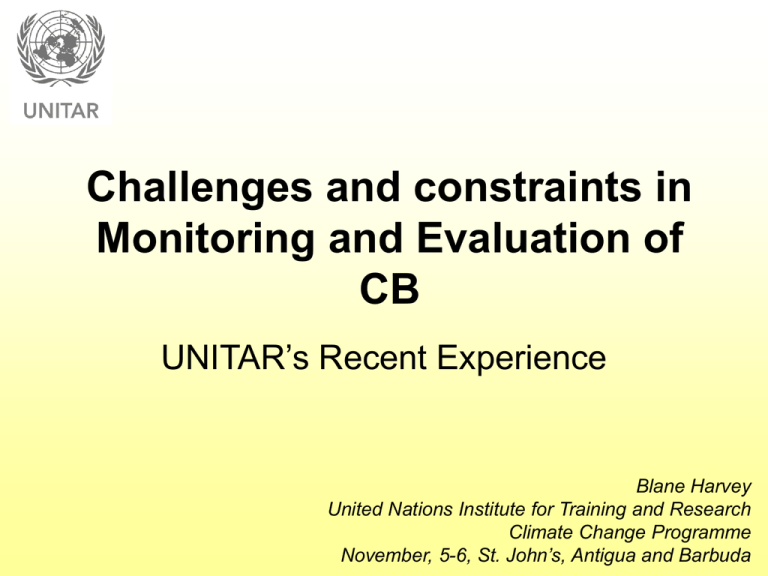
Challenges and constraints in Monitoring and Evaluation of CB UNITAR’s Recent Experience Blane Harvey United Nations Institute for Training and Research Climate Change Programme November, 5-6, St. John’s, Antigua and Barbuda Overview • Our CB approach • Current activities which fit within our approach • M&E Constraints encountered • An integrated approach to CB M&E. Our approach to Capacity Building • Keys: – Strengthening existing institutional and human capacity at Southern centers of excellence and with Southern researchers. – Strengthening the autonomy of Southern institutes and researchers and facilitating South-South cooperation. – Encouraging partners to develop their own aims and strategies for building capacity internally and with their networks of partners (Endogenously driven approach). Examples of our Approach Climate Change Capacity Development • Partners: ENDA-TM (Senegal), ERC (South Africa), MIND (Sri Lanka). • Launched in 2003, with funding from the EC, Irish Aid, DANIDA, and the Swiss (FOEN). • Aims to strengthen the network's ability to deliver targeted training and capacity development at national and regional levels in West and southern Africa, and Asia. • 19 Pilot Projects in 17 countries. Implemented with ENDA-TM, SEI and START International. • Launched in Jan. 2007 with funding from the EC, UK-DEFRA and IDRC. • Focuses upon both the identification and prioritization of climate risks among vulnerable stakeholders and strengthening the capacity of researchers to effectively communicate these risks to stakeholders and policy-makers. M&E Constraints and Challenges • Lack of ownership of the M&E process or results: – Different funders = different and ever-changing monitoring and reporting requirements. • Little is retained in terms of M&E capacity. – Partners feel alienated from the M&E process. • • • • Non-negotiable, “one-size-fits-all” requirements. Just another hoop to jump through? Relevance to their aims? One-way, upward accountability. • Provides little account of qualitative “change” or learning and how they occurred. • Complexity is masked. Integrative design • Seeks to accommodate both funder concerns (accountability, verifiable results, timely implementation) and the partner concerns noted above. • Draws upon both results- and process-oriented approaches to M&E. • Participatory development of targets at inception and regular review of their viability and appropriateness. • Encourages partners to document and learn from their experience and change. Integrative design • Collaborative relationship with backstopper, who guides and challenges partners to reflect. Facilitated through a collaborative online platform. THANK YOU! www.unitar.org/ccp blane.harvey@unitar.org annie.roncerel@unitar.org
